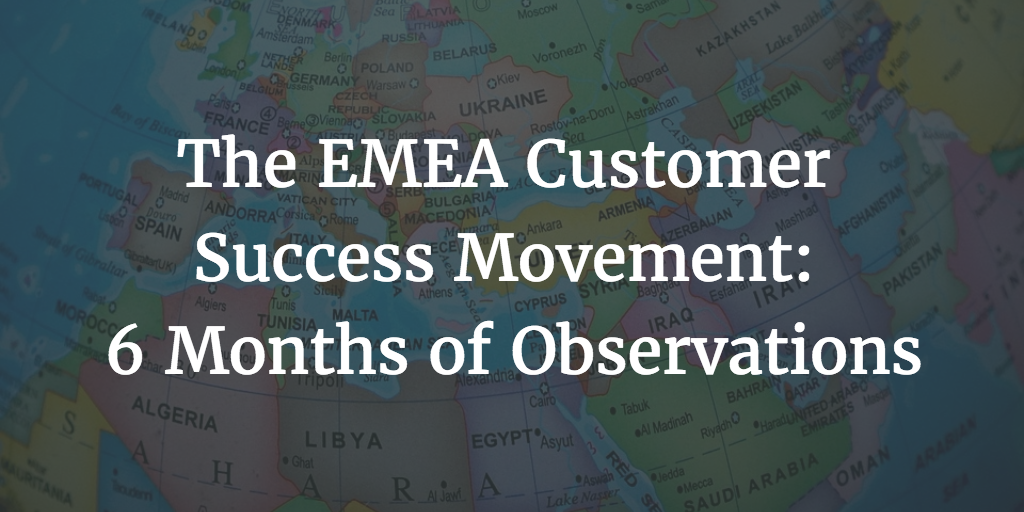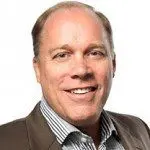Dan Steinman is the Chief Customer Evangelist, EMEA at Gainsight.
I have been in Europe now for six months preaching the gospel of Customer Success, networking with anyone who would let me buy them a cup of coffee, and listening, listening, listening. I’ve learned a lot, validated many assumptions about EMEA, and changed my mind on a few things, too. I’ll try to summarize below.
1. Europe is not one entity, it’s at least 28.
It’s OK to speak of “going to Europe” or “building our business in EMEA” but it’s really important to understand that one strategy doesn’t cover all countries. Culture and language dictate that you must do more than that. And even though English is a very common language, just because someone speaks it doesn’t mean there aren’t cultural differences to be taken into account.
2. The two-year gap.
In general, there’s about a two-year gap between the understanding and execution of Customer Success in Silicon Valley vs. Europe. By the way, that same gap exists in much of the United States, too. If you’re not in San Francisco, Boston, Seattle, New York, or Austin, you may well be in the same place as the people in London, Amsterdam, and Berlin when it comes to Customer Success.
3. There’s a thirst for learning.
We’ve hosted two Pulse Europe events (Customer Success industry conferences) and had 1100 attendees in those two years without any presence in Europe as a company. That speaks of the Customer Success movement much more than it does about Gainsight. People in Customer Success desperately want to talk to, and hear from, others who are on the same journey.
4. The two-year gap will close quickly.
In general, Europe is moving up the learning curve at an astounding rate. Some of it is listening and learning from the mistakes we’ve made in Silicon Valley and some of it is experienced professionals from the US coming over to lead teams here and some of it is just humility and common sense. There’s no NIH attitude anywhere I can find in Europe and there’s an eagerness to learn from others’ mistakes.
5. SaaS companies are leading the way.
There are LOTS of SaaS companies in Europe and that’s where the rubber really meets the road when it comes to Customer Success. The movement at the grassroots is strong in those companies where every customer is on a subscription and usage data (how your customers use your products) is easily accessible. That’s not just because it’s a great idea, it’s because it’s a business imperative. Interestingly this often means that smaller companies are leading the bigger ones to the green pastures of Customer Success.
6. The pressure to move to a recurring revenue business model is strong.
It’s not just Silicon Valley, it seems that every business in the world is under pressure to create a subscription model for at least some of their customers. I guess when Wall Street loves something (see Salesforce’s market valuation for evidence), every CEO starts to think about it and love it, too. And once the move to subscription has started, Customer Success soon follows.
7. The book is popular.
We wrote the book on Customer Success a couple of years ago and it’s been extremely well received in the US and I find it on bookshelves all over Europe, too. Maybe you aren’t surprised by this but I was. Maybe it’s because I’m one of the authors, but it caught me off-guard in a pleasant way.
8. The concepts of Customer Success are broad.
We’ve really discovered this in the US only in the past couple years but it’s well understood in Europe already. Customer Success is not just for SaaS companies but for every company that believes they can get more value out of their install base. Note that this is not just about churn. It’s often about protecting and driving more value to the incredible set of customers you’ve worked so hard to gain and grow.
9. Customer Success is more expensive in Europe.
At least for now. A higher touch, both Sales and post-Sales, is often expected (maybe because Europe is relatively small) and because you do have to face the language and culture challenges in certain countries at some point. Sales organizations have known this for many years but it impacts Customer Success (and CFOs), too. Technology can help address this but it’s not
the whole answer.
10. This adventure is incredibly exciting and fun!
An economy moving to subscription and businesses understanding the value of being more effective in managing existing customers are cornerstones to a full embrace of Customer Success across every industry. The smart people doing this in Europe are already teaching me things that I’ve never even considered and I’m supposed to be one of the experts. How cool is that?
I’m totally thrilled and excited to be part of the European Customer Success Community (thanks for having me). I’ve been embraced wherever I’ve gone and it’s just plain cool to be helping people think through the challenges and grasp some of the concepts that we’ve learned slowly and painfully over the past 10 years back in the states. I know for sure that many of the Customer Success people in Europe will be among the 5000 that will attend our Pulse conference in May in Oakland, CA, and I have no doubt that we’ll have at least 1000 later this year for Pulse Europe (dates coming soon).
As I said at the first Pulse in 2013, Customer Success is not a fad, it’s not a new term for Customer Support, and it’s not just a warm fuzzy phrase that CEOs can use to pay lip service to their customers. It’s a movement, a discipline, and a philosophy that is changing the way we think about our businesses and transforming the way those businesses think about their customers.
One other note of import. Keep your eyes and ears open for a series of Customer Success content contributions coming from the local European community. We’re excited to give voice to these experts and to help curate and promote this fantastic content. Stay tuned to this channel for more soon.

